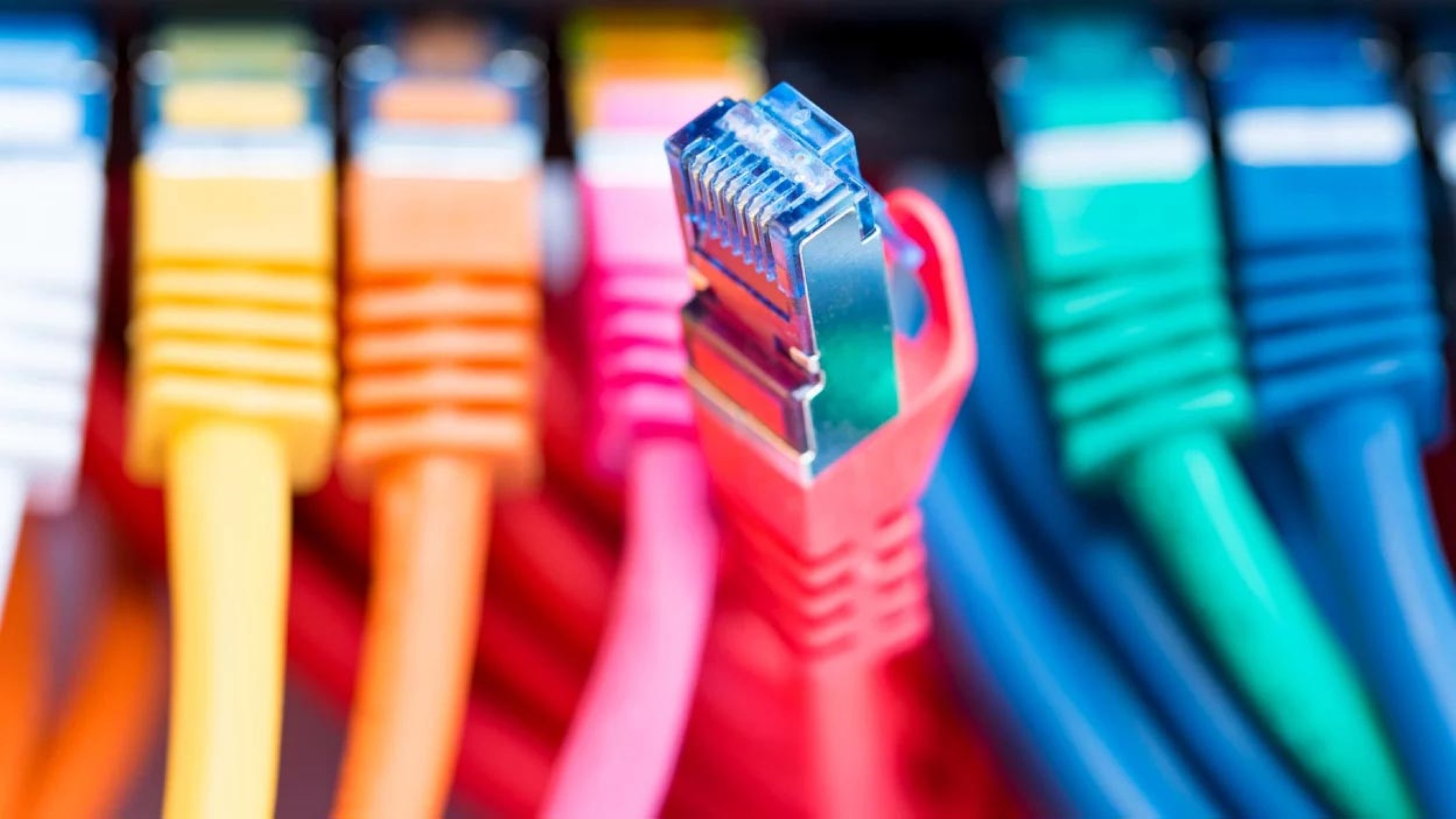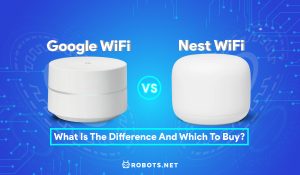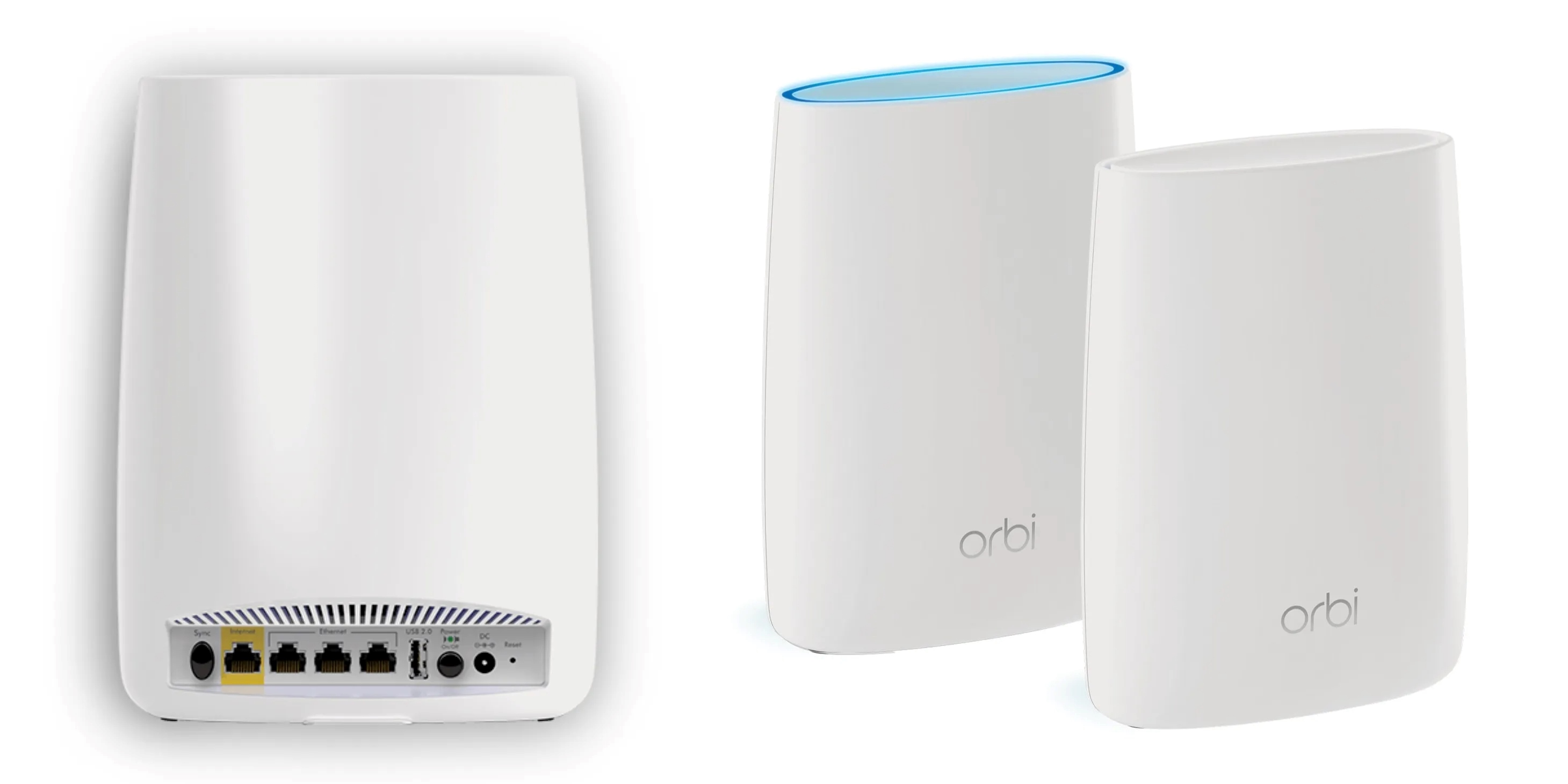Introduction
Welcome to the world of Ethernet cables! If you’re reading this article, chances are you’re looking to determine which type of Ethernet cable you have. Whether you’re setting up a new network or just curious about the capabilities of your current cable, it’s essential to understand the different categories of Ethernet cables and their features.
An Ethernet cable is a vital component in connecting devices within a Local Area Network (LAN) or to the internet. It allows for the efficient and reliable transmission of data between computers, routers, switches, and other networking equipment.
With the advancements in technology, several categories of Ethernet cables have been developed to support the increasing demands for faster data transfer speeds and improved network performance. These categories, commonly referred to as Cat5, Cat5e, Cat6, Cat6a, and Cat7, differ in terms of their transmission capabilities and potential data speeds.
In this article, we will guide you through the process of identifying the type of Ethernet cable you have and help you understand the unique features of each category. By the end, you’ll have a clearer understanding of your cable’s capabilities and whether an upgrade might be necessary for your network.
So, let’s not waste any more time and dive into unraveling the mystery of your Ethernet cable type!
Checking the Category of an Ethernet Cable
Before we delve into identifying the specific type of Ethernet cable you have, it’s essential to know how to check its category. Fortunately, determining the category of an Ethernet cable is relatively straightforward.
The quickest way to identify the category is by looking at the printed markings on the cable. Manufacturers usually label their cables with the category or abbreviation, such as “Cat5,” “Cat5e,” “Cat6,” and so on. If you find any of these markings on your cable, you’ve already got the answer!
If there are no visible markings on the cable, don’t worry. You can still determine the category by examining the cable’s physical characteristics. One way to do this is by checking the number of twisted pairs of wires inside the cable. The number of pairs corresponds to the cable’s category.
For example, Cat5 cables typically have four twisted pairs, Cat5e cables have four as well, while Cat6 cables have four or more. Cat6a cables usually consist of four or more individually shielded twisted pairs, and Cat7 cables have four individually shielded twisted pairs.
In addition to the number of twisted pairs, you can also inspect the color-coding of the wires within the cable. Each category has a specific color code assigned to its wires, making it easier to identify the cable type.
By examining the cable’s markings or physical characteristics, you should be able to determine the category of your Ethernet cable. Once you have this information, you can now proceed to understand the unique features and capabilities of each specific type.
Identifying Ethernet Cable Types
Now that you know how to check the category of an Ethernet cable, let’s dive into understanding the different types and their unique features.
Cat5 Ethernet Cables
Cat5 cables, also known as Category 5 cables, were widely used in the past but are now considered outdated for typical networking purposes. These cables support data transfer speeds of up to 100 Mbps and have a maximum length of 100 meters. They are typically used for basic networking needs, such as connecting computers to routers or switches in small office or home setups.
Cat5e Ethernet Cables
Upgrading from Cat5, Cat5e cables, or Category 5e cables, offer enhanced performance and support data transfer speeds of up to 1000 Mbps (1 Gbps) over short distances. They have improved insulation and reduced crosstalk, allowing for more reliable and stable connections. Cat5e cables are backward-compatible with Cat5 cables and are suitable for most residential and small-business network setups.
Cat6 Ethernet Cables
Cat6 cables, or Category 6 cables, provide higher bandwidth and faster data transfer speeds compared to Cat5e cables. They can support data rates of up to 10 Gbps over shorter distances (up to 55 meters) and have improved resistance to crosstalk and interference. Cat6 cables are widely used in commercial settings where high-speed networking is required, such as in offices, data centers, and multimedia applications.
Cat6a Ethernet Cables
Building upon the capabilities of Cat6, Cat6a cables, or Category 6a cables, offer even higher performance and support data transfer speeds of up to 10 Gbps over longer distances (up to 100 meters). They have better shielding and reduced alien crosstalk, making them suitable for applications that require higher bandwidth, such as professional audio/video installations and 10GBASE-T Ethernet.
Cat7 Ethernet Cables
The latest category in Ethernet cables, Cat7 cables, or Category 7 cables, provide the highest level of performance and support data transfer speeds of up to 10 Gbps at a maximum distance of 100 meters. Cat7 cables have improved shielding and reduced crosstalk, resulting in superior signal quality and minimal interference. They are commonly used in demanding environments, such as large data centers, server farms, and industrial settings.
By identifying the type of Ethernet cable you have, whether it’s Cat5, Cat5e, Cat6, Cat6a, or Cat7, you can determine its specific capabilities and suitability for your networking needs.
Notable Features of Cat5 Ethernet Cables
Cat5 Ethernet cables, also known as Category 5 cables, were once widely used for networking purposes. While they may be considered outdated for high-speed applications, Cat5 cables still have their own notable features:
- Maximum Speed: Cat5 cables are capable of supporting data transfer speeds of up to 100 Mbps. While this speed may be sufficient for basic internet browsing and email usage, it may not meet the demands of bandwidth-intensive activities like streaming high-definition videos or online gaming.
- Length Limit: Cat5 cables have a maximum length limitation of 100 meters (328 feet). This means that if you’re setting up a network in a larger space, additional networking equipment, such as switches or repeaters, may be required to extend the network coverage.
- Compatibility: Although Cat5 cables are considered outdated, they are still compatible with most modern networking equipment. This allows you to use them in conjunction with newer cables or for specific applications where high-speed data transfer is not a priority.
- Cost-Effectiveness: Cat5 cables are generally more affordable compared to newer cable categories. If you have basic networking needs and are on a budget, Cat5 cables can still provide a reliable connection without breaking the bank.
- Ease of Installation: Cat5 cables are easy to handle and install due to their relatively simple construction. They have four pairs of twisted copper wires, color-coded for easy identification, and use a standard RJ-45 connector for connecting to devices.
- Backward Compatibility: One advantage of Cat5 cables is that they are backward compatible with newer Ethernet standards. This means that if you upgrade your networking equipment to support faster speeds, you can still use your existing Cat5 cables without any issues.
While Cat5 cables may not meet the requirements of high-speed networks today, they still serve a purpose in certain scenarios. If you have basic networking needs, a limited budget, or simply need to extend your existing network, Cat5 cables can provide a cost-effective and reliable solution.
Notable Features of Cat5e Ethernet Cables
Cat5e Ethernet cables, or Category 5e cables, are an improved version of Cat5 cables with enhanced features. Let’s explore the notable features of Cat5e Ethernet cables:
- Data Transfer Speeds: Cat5e cables can support data transfer speeds of up to 1000 Mbps (1 Gbps). This makes them suitable for most residential and small-business network setups, providing ample bandwidth for activities such as streaming, online gaming, and file transfers.
- Improved Performance: Cat5e cables have improved insulation and reduced crosstalk compared to Cat5 cables. This reduces the interference between wires and helps maintain a stable and reliable connection, even in environments with high network traffic.
- Length Limit: Cat5e cables have a maximum length limitation of 100 meters (328 feet). This allows for network coverage in most standard home and office environments without the need for additional equipment.
- Backward Compatibility: Cat5e cables are backward compatible with Cat5 cables. This means that you can use Cat5e cables in place of Cat5 cables without any issues, allowing for upgrades or expansions to your existing network infrastructure.
- Cost-Effective: Cat5e cables are relatively affordable compared to newer cable categories, such as Cat6 or Cat6a. This makes them a cost-effective choice for everyday networking needs, providing reliable performance without costing a fortune.
- Ease of Installation: Similar to Cat5 cables, Cat5e cables are easy to handle and install. They utilize four pairs of twisted copper wires, color-coded for easy identification, and use the standard RJ-45 connector for connecting to devices.
- Flexible Applications: Cat5e cables are suitable for a wide range of applications, including home networks, small office setups, and environments with moderate network traffic. They can handle everyday tasks and support multimedia streaming, VoIP (Voice over Internet Protocol), and other common networking requirements.
Cat5e Ethernet cables offer significant improvements over Cat5 cables, providing faster data transfer speeds, better performance, and the ability to handle a broader range of applications. If you’re looking for a reliable and cost-effective solution for your network needs, Cat5e cables are an excellent choice.
Notable Features of Cat6 Ethernet Cables
Cat6 Ethernet cables, or Category 6 cables, offer significant advancements over their predecessors, Cat5 and Cat5e. Let’s explore the notable features of Cat6 Ethernet cables:
- Higher Bandwidth: Cat6 cables are designed to support higher bandwidths and faster data transfer speeds compared to Cat5 and Cat5e cables. They can transmit data at speeds of up to 10 Gbps (10,000 Mbps), making them ideal for high-bandwidth activities, such as streaming high-definition videos or gaming.
- Improved Performance: Cat6 cables have better insulation and reduced crosstalk, thanks to tighter twisted pairs and improved shielding. This helps minimize signal interference and maintains signal integrity, resulting in a more stable and reliable connection.
- Length Limit: Cat6 cables have a maximum length limitation of 100 meters (328 feet), similar to Cat5 and Cat5e cables. This allows for network coverage in most standard home and office environments without the need for additional equipment.
- Backward Compatibility: Cat6 cables are compatible with older Ethernet standards and can be used in place of Cat5 or Cat5e cables. This ensures seamless integration with existing network infrastructure and allows for easy upgrades without the need for rewiring.
- Future-Proofing: By utilizing Cat6 cables, you are ensuring that your network infrastructure can handle future advancements in technology. This provides peace of mind and prevents the need for frequent cable upgrades as network speeds continue to evolve.
- Enhanced Shielding: Cat6 cables employ greater shielding to reduce external electromagnetic interference (EMI). This makes them more resistant to noise from adjacent cables or electrical devices, resulting in improved signal quality.
- Application Versatility: Cat6 cables are suitable for a wide range of applications, including home networks, small offices, large enterprises, and data centers. They are well-suited for demanding environments that require high-speed and reliable networking, such as multimedia streaming, IP telephony, and large file transfers.
With their higher bandwidth and improved performance, Cat6 Ethernet cables provide a significant boost in network speed and reliability. Whether you’re a casual user or running a business network, Cat6 cables are an excellent choice for achieving faster and more efficient data transmission.
Notable Features of Cat6a Ethernet Cables
Cat6a Ethernet cables, also known as Category 6a cables, are an enhanced version of Cat6 cables with several notable features. Let’s explore what sets Cat6a cables apart:
- Higher Data Transfer Speeds: Cat6a cables can support data transfer speeds of up to 10 Gbps (10,000 Mbps), just like Cat6 cables. However, the key difference is that Cat6a cables can maintain these speeds over longer distances up to 100 meters (328 feet), compared to the 55 meters (180 feet) supported by Cat6 cables.
- Improved Performance: Cat6a cables feature improved shielding and reduced alien crosstalk (interference from neighboring cables). This results in better signal quality, improved data transmission rates, and enhanced overall network performance.
- Longer Cable Runs: The ability of Cat6a cables to maintain high speeds over longer distances makes them suitable for larger homes, offices, or data centers where extended cable runs are required without compromising data speed or signal quality.
- Enhanced Shielding: Cat6a cables typically have individually shielded pairs, which helps minimize crosstalk and electromagnetic interference (EMI). This makes them ideal for environments with high levels of electrical noise or where multiple cables are bundled together.
- Backward Compatibility: Cat6a cables are backward compatible with lower category cables, including Cat6 and Cat5e. This means that you can use Cat6a cables with older networking equipment or replace existing cables without any issues.
- Future-Proofing: By deploying Cat6a cables, you are preparing your network for future advancements. Cat6a cables support higher data rates, ensuring that your infrastructure can handle increasing network demands and technologies for years to come.
- Application Flexibility: Cat6a cables are suitable for a wide range of applications, including high-bandwidth activities like 4K video streaming, high-performance computer networks, PoE (Power over Ethernet), and IP-based voice and data systems. They excel in environments that require fast and reliable data transmission.
Cat6a Ethernet cables offer improved performance, higher data speeds, and longer cable runs compared to Cat6 cables. If you’re looking for a future-proof and high-performance solution for your network, Cat6a cables provide the necessary capabilities to handle the demands of modern network applications.
Notable Features of Cat7 Ethernet Cables
Cat7 Ethernet cables, also known as Category 7 cables, are the highest category of Ethernet cables available. Let’s explore the notable features that set Cat7 cables apart:
- High Data Transfer Speeds: Cat7 cables can support data transfer speeds of up to 10 Gbps (10,000 Mbps) over a maximum distance of 100 meters (328 feet). This makes them ideal for demanding applications that require ultra-fast and reliable network connectivity.
- Reduced Signal Interference: Cat7 cables feature improved shielding, including individually shielded pairs (S/FTP), which provide excellent protection against crosstalk and external electromagnetic interference (EMI). This helps maintain a stable and interference-free connection.
- Future-Proofing: Cat7 cables have higher performance capabilities and are designed to meet the demands of future network advancements. By investing in Cat7 cables, you can ensure that your network infrastructure can handle emerging technologies and increasing data transfer speeds.
- Backward Compatibility: While Cat7 cables are designed to operate at higher frequencies, they are backward compatible with lower category cables. This means you can use Cat7 cables with older networking equipment or replace existing cables without any compatibility issues.
- Application Versatility: Cat7 cables are suitable for a wide range of applications, including high-performance computer networks, data centers, and industrial environments that require fast and secure data transmission. They are particularly beneficial in environments with high levels of EMI or where long cable runs are necessary.
- Future-Proofing: By deploying Cat7 cables, you are preparing your network for future advancements. Cat7 cables support higher data rates, ensuring that your infrastructure can handle increasing network demands and technologies for years to come.
- Potential for Power over Ethernet (PoE): Cat7 cables can support PoE technology, allowing for simultaneous data and power transmission. This is particularly useful for devices like IP cameras, wireless access points, and VoIP phones that require both data connectivity and power from a single cable.
Cat7 Ethernet cables offer unrivaled performance, exceptional data transfer speeds, and superior protection against interference, making them the go-to choice for high-bandwidth and mission-critical applications. If you’re looking for the utmost in reliability and future-proofing for your network, Cat7 cables are the ideal solution.
Conclusion
Understanding the different categories of Ethernet cables is essential for optimizing your network’s performance and determining the capabilities of your existing cables. Cat5, Cat5e, Cat6, Cat6a, and Cat7 cables each have their own unique features and suitability for specific applications.
If you have basic networking needs and are on a budget, Cat5 cables can still provide a reliable connection. For improved performance and faster data transfer speeds, Cat5e cables are a cost-effective option.
If you require higher bandwidth and faster speeds, Cat6 cables are suitable for most commercial settings, while Cat6a cables provide even better performance and can maintain high speeds over longer distances.
If you need the highest level of performance and are future-proofing your network, Cat7 cables offer the highest data transfer speeds, excellent shielding, and the ability to handle emerging technologies.
By identifying the category of your Ethernet cable, you can make informed decisions about upgrades or replacements that align with your networking requirements and budget.
Remember, when choosing Ethernet cables, consider factors such as data transfer speeds, shielding capabilities, length limitations, and compatibility with your networking equipment. Always ensure that the cables you choose meet your specific needs and provide the desired level of performance.
Whether you’re setting up a new network or upgrading an existing one, it’s worth investing in high-quality Ethernet cables that can handle the demands of your network and provide reliable, fast, and secure data transmission.
Now that you have a better understanding of Ethernet cable types, you can confidently optimize your network for maximum performance and enjoy seamless connectivity in all your networking endeavors.

























